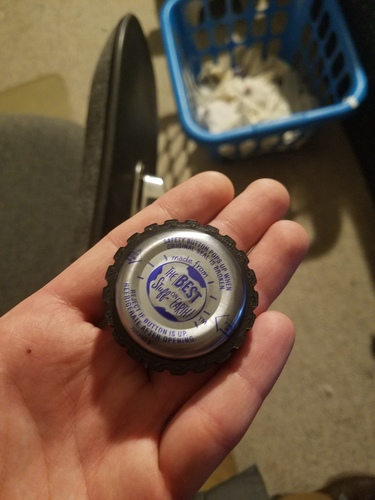
Sonic Cane (Human Echolocation) Device
pinshape
You may have heard of echo location for bats and owls, but did you know that people too can use it? Daniel Kish, a blind man, developed what he calls "Flash Sonar" using sound waves to navigate all sorts of environments and teaches blind teens how to do the same. This device is meant to help the blind learn his technique. The printed part houses a Snapple bottle cap that we click to annoy our friends. That click makes this simple print extremely useful for flash sonar. The glossy flat surface created by the bed when printing also makes it the perfect way to transmit sound to other objects, allowing material identification for surfaces with misleading textures. When held flat to a door or table, it clicks louder, allowing the blind to use their environment to map a full room even over background noises. The gear pattern allows for a solid grip when using it out in the world and also complex surface mapping by dragging the edge of the gear along hard surfaces to help pick up deviations that fingers just aren't sensitive enough to catch. When printed in PLA, the dragging should be non-marring on most surfaces. Check out the video of how it works here. The cap area is offset by 0.015 from the true dimension of the cap. Although the cap fits snugly, I recommend using a hard glue like Gorilla Glue to keep the cap in place. This print doesn't require high precision and can be printed on virtually any machine in about an hour or less. Taking a few of these to a local school for the blind this month will help determine how the kids like it.
With this file you will be able to print Sonic Cane (Human Echolocation) Device with your 3D printer. Click on the button and save the file on your computer to work, edit or customize your design. You can also find more 3D designs for printers on Sonic Cane (Human Echolocation) Device.
